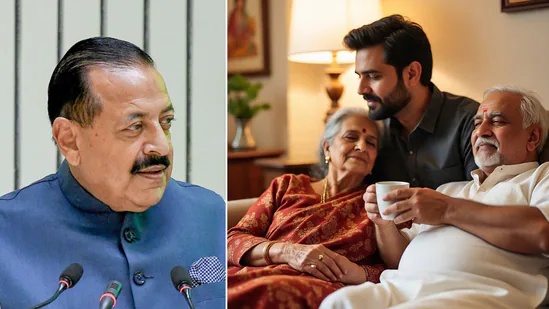
Policy Update Grants 30-Day Leave for Elderly Care
Central government employees will now have access to a dedicated leave benefit for caregiving responsibilities, as confirmed by Union Minister Jitendra Singh during a parliamentary session. The policy update, aligned with the Central Civil Services (Leave) Rules, 1972, allows employees to utilize up to 30 days of earned leave annually for personal reasons, including the care of elderly parents. This clarification addresses longstanding concerns about work-life balance for government staff managing family obligations. Singh emphasized that the existing framework already permits such leave, though the recent clarification underscores its importance. The provision, though not new, has been highlighted as a critical support measure for employees navigating caregiving duties amid professional commitments. This update reflects a growing recognition of the need to balance public service with personal responsibilities, particularly in an aging population.
Understanding the CCS (Leave) Rules Framework
The Central Civil Services (Leave) Rules, 1972, form the backbone of leave entitlements for most Central government employees. These rules govern a comprehensive array of leave types, including earned leave, half pay leave, and special disability leave, among others. However, the rules do not extend to specific categories such as Railway employees, casual workers, or members of the All India Services, who are subject to separate regulations. The 1972 framework provides a structured approach to leave management, ensuring employees can plan for personal and family needs without compromising their professional obligations. While the rules are extensive, they remain adaptable to evolving societal needs, as evidenced by the recent emphasis on caregiving leave. This adaptability ensures that the framework remains relevant in addressing contemporary challenges faced by government employees.
Leave Types and Employee Coverage
Employees under the CCS (Leave) Rules, 1972, are entitled to a variety of leave categories, each designed to meet specific personal and professional needs. Earned leave, for instance, is credited twice annually and can be used for a range of purposes, including caregiving. Other leave types, such as maternity leave and child care leave, further demonstrate the rules’ flexibility. However, the rules do not apply uniformly across all government employees, with exceptions for certain categories like state government workers and specific service groups. This distinction highlights the nuanced approach to leave entitlements, ensuring that different employee groups receive tailored support. The recent clarification on caregiving leave underscores the government’s commitment to addressing the diverse needs of its workforce, particularly in an era where aging populations and family responsibilities are increasingly intertwined.
Broader Implications and Future Outlook
The expansion of leave benefits for caregiving is part of a broader trend toward recognizing the importance of work-life balance in public service. As the population ages, the demand for such policies is likely to grow, prompting further refinements to existing frameworks. The recent emphasis on elderly care leave may also inspire similar measures in other sectors, fostering a more supportive environment for employees managing family responsibilities. Additionally, the policy update highlights the need for ongoing dialogue between policymakers and employees to ensure that leave entitlements remain practical and responsive to real-world challenges. By prioritizing the well-being of its workforce, the government not only enhances employee satisfaction but also strengthens institutional effectiveness through reduced burnout and increased retention.
Regional and Sectoral Variations in Leave Policies
The application of leave entitlements varies across different regions and sectors, reflecting the diverse needs of government employees. While the CCS (Leave) Rules, 1972, apply to most Central government employees, state government workers and specific service groups are subject to separate regulations. This variation ensures that leave policies are tailored to the unique contexts of different employee categories. For example, employees in states like Andhra Pradesh or Rajasthan may have distinct leave provisions compared to those in the National Capital Territory of Delhi. This regional customization allows for greater flexibility in addressing local workforce dynamics. As the government continues to refine its leave policies, it will need to balance standardization with the need for localized adaptations to meet the varied needs of its employees.



